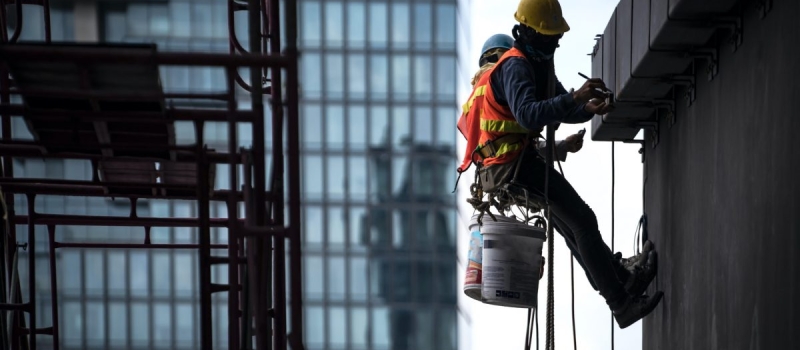Advancements in Current Fall Protection Measures
Tuesday, August 22, 2023 Joseph Coniglio

Falls from heights continue to be a grave concern across various industries, including construction, manufacturing, and maintenance. These incidents persist as a leading cause of workplace injuries and fatalities, underscoring the critical need for effective fall protection measures. Advancements in this field are on a constant rise, aiming to elevate worker safety and drastically reduce the occurrence of accidents. This article explores the contemporary landscape of fall protection measures, spotlighting the innovative strategies and technologies that are driving significant improvements in workplace safety.
Statistics on Fall-Related Incidents
- According to the Occupational Safety and Health Administration (OSHA), falls are the leading cause of fatalities in the construction industry, accounting for approximately 36% of all construction-related deaths.
- A study conducted by the National Institute for Occupational Safety and Health (NIOSH) revealed that falls from roofs, ladders, and scaffolds accounted for 81% of fall-related deaths in the construction industry.
1. Harnessing the Power of Technology
Advancements in technology are playing a pivotal role in revolutionizing fall protection measures, offering novel solutions to age-old challenges:
a. Wearable Technology: Smart wearable devices, such as harnesses embedded with sensors, have gained significant traction. These sensors continuously monitor a worker's movements and position. In the event of abnormal activity or a fall, these devices can promptly trigger alerts or deploy safety mechanisms, such as airbags, to minimize the impact of the fall.
b. Drones for Inspection: Drones, armed with cameras and sensors, are proving invaluable for high-risk inspections and surveys at heights. By reducing the need for physical access to hazardous areas, drones mitigate the exposure of workers to potential fall risks.
c. Virtual Reality (VR) Training: Virtual Reality technology is being harnessed to provide workers with immersive training experiences. This enables them to practice working at heights within a controlled virtual environment, enhancing their skills and decision-making abilities without subjecting them to actual hazards.
2. Advanced Equipment and Systems
Significant advancements have also been made in fall protection equipment and systems, bolstering worker safety:
a. Self-Retracting Lifelines (SRLs): Self-retracting lifelines have become a cornerstone of fall protection equipment. These devices automatically adjust the lifeline's length in response to a worker's movements, minimizing tripping hazards and reducing the distance of a potential fall.
b. Horizontal Lifeline Systems: These systems provide uninterrupted protection for workers engaged in tasks necessitating horizontal movement at heights. By enabling free movement while maintaining a secure lifeline connection, these systems offer a seamless blend of safety and mobility.
c. Guardrails and Safety Nets: Passive fall protection measures, like guardrails and safety nets, establish a tangible barrier between workers and potential fall hazards. These elements serve as dependable layers of protection.
3. Comprehensive Training and Education
Fall protection isn't solely reliant on equipment; holistic training and education are pivotal components:
a. Competent Person Training: Employers are investing in comprehensive training programs to certify competent individuals with an in-depth understanding of fall hazards, equipment usage, and rescue protocols. These certified personnel can adeptly assess worksites and make well-informed decisions regarding fall protection measures.
b. Worker Empowerment: Workers are being educated about the criticality of fall protection and the correct utilization of equipment. Empowered workers are more likely to adhere to safety protocols and take ownership of their well-being.
Industries are evolving, and so are fall protection measures. The integration of cutting-edge technology, innovative equipment, and rigorous training programs has profoundly transformed safety protocols for workers operating at heights. While these advancements are heartening, it remains imperative for employers and employees to sustain their commitment to safety standards and adapt to emerging best practices. By fostering a culture of safety and wholeheartedly embracing the latest advancements, we can secure workers and encourage them to perform their tasks without unnecessary risks.
Sources




